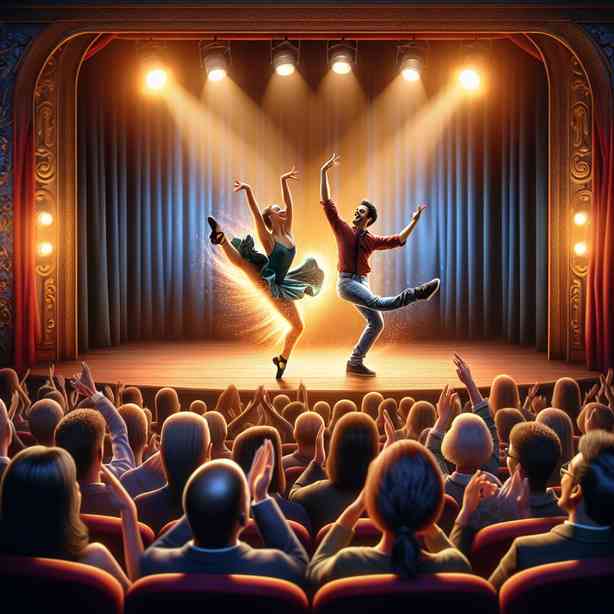
Performing arts is a realm where creativity knows no bounds, and every element plays a crucial role in storytelling. In this vibrant tapestry, one can discover the fascinating concept of how sometimes, the wrong step on stage can actually appear right. While it may sound counterintuitive, the beauty of theatrical performances often lies in the imperfections that add authenticity and depth to a character or a scene. In this narrative, we will explore this intriguing phenomenon, looking closely at how missteps can transform a performance from mundane to memorable.
In the world of theater, every movement, every line delivered, and every emotion exhibited contributes to the overall atmosphere of the production. Actors rehearse meticulously to ensure that they embody their characters authentically, seamlessly moving from one scene to another. But what happens when an actor stumbles, both literally and figuratively? Surprisingly, these moments often create the most riveting stage experiences.
Consider the moment an actor forgets their lines. For many, this scenario induces panic, as the pressure of delivering a flawless performance mounts. However, those unforeseen lapses can offer an opportunity for creativity to shine. A quick improvisation or an interaction with fellow cast members can lead to an unexpected yet compelling direction for the performance. In this respect, the “wrong step” becomes an avenue for spontaneity, engaging the audience in a dynamic way.
Another example can be found in physical comedy, where clumsiness is not only accepted but celebrated. Great comedians like Charlie Chaplin and Lucille Ball have demonstrated how the most awkward fails can ignite laughter and endear the audience to characters. It’s in these moments of imperfection that one often catches a glimpse of the human experience, finding relatability in the chaos. The grace of a stumble or a wrong turn can move an audience more than the perfection of choreography ever could.
The concept of breaking the fourth wall further enhances our understanding of how wrong steps can appear right on stage. When an actor acknowledges the audience, intentionally or unintentionally, they invite viewers into a shared experience. This engagement allows for a sense of camaraderie between the performer and the audience, often leading to spontaneous reactions that breathe life into a performance. A simple misstep may be met with laughter, allowing the actor to pivot and turn the flub into an integral part of the narrative flow.
Technical glitches also serve as perfect examples of this phenomenon. From a wayward microphone to unexpected stage lighting, sometimes, the elements of a production veer off script. Yet, seasoned performers know how to embrace these challenges. A sudden blackout might result in improvised dialogue that resonates deeply with the audience or sets a particular emotional tone. Often, these nuanced moments are what linger in the memory long after the curtain falls.
Another aspect worth considering is the genre of the performance. In theatrical comedy, for instance, the unexpected bloopers often work to the advantage of the storyline. Comic timing and the ability to roll with the punches can elevate a mundane script into a comedic masterpiece. By allowing spontaneity into the performance, actors create an atmosphere of unpredictability, maintaining the audience’s engagement and eliciting genuine reactions.
Moreover, the cast’s chemistry plays a vital role in how well they can adapt to such situations. When actors trust each other and are comfortable on stage, they can navigate through conflict—whether it’s a missed cue or an ad-libbed line—gracefully. These moments of connection can strengthen the bond between characters, making missteps not just acceptable but essential to conveying a deeper layer of narrative.
It’s also fascinating to examine the audience’s perspective. Each individual’s interpretation can be heavily influenced by the subtleties of these “wrong steps.” Spectators may appreciate the authenticity that a misstep provides, seeing it as a more genuine representation of life. This unpredictability stands in stark contrast to the polished perfection one typically associates with performance art. In essence, the acceptance of imperfection allows audiences to connect emotionally, bridging the gap between the actors’ experiences and their own.
In addition, embracing the notion of failure can provide significant benefits in actor training and development. Acting programs often encourage students to explore vulnerability, making room for errors while emphasizing the importance of resilience and adaptability. Learning how to handle mistakes can turn an aspiring actor into a seasoned performer who thrives under pressure.
The previously mentioned themes also extend beyond the stage and into the realm of film and television. Directors and writers often build character arcs around flawed individuals, highlighting that humanity is inherently imperfect. These stories resonate deeply with audiences because they reflect real-life experiences. When an actor emulates these flaws authentically, even a misjudged scene can resonate powerfully with viewers.
Embracing mistakes brings us to the broader implications of acceptance in our artistic pursuits. Whether in theater, dance, or other forms of art, the willingness to embrace the unexpected is crucial for growth. Each performance is a unique journey, with its own challenges and triumphs, and sometimes those challenges manifest as mistakes. Recognizing this can liberate artists, encouraging them to take risks and explore their creative boundaries without fear of failure.
In conclusion, the art of stage performance is not merely about executing a flawless routine; it’s about capturing the essence of the human experience—the beautiful imperfections that define us all. When a wrong step appears right, it serves as a reminder that spontaneity and authenticity can enrich a performance in ways that polish cannot. By valuing these missteps and integrating them into the fabric of the storytelling process, performers not only enhance their craft but also foster deeper connections with their audiences. In a world that often seeks perfection, the embrace of imperfection can lead to the most profound and impactful performances. Thus, the true artistry lies in recognizing that sometimes, the wrong step is the most right move in creating a captivating stage presence.


